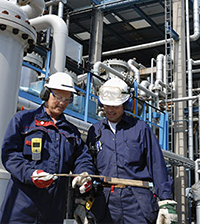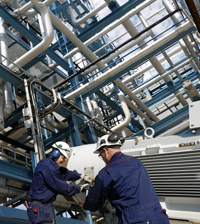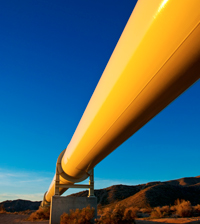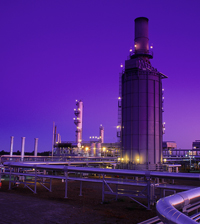
Gas-Liquid Separators Sizing Parameter
September 3, 2015
|
Tip of the Month
In this Tip of the Month (TOTM), we will focus on the application of Souders-Brown approach in gas-liquid separators and present diagram, simple correlations and tables to estimate the Souders-Brown equation constant, KS (the so called sizing parameter). We will consider both vertical and horizontal gas-liquid separators. Knowing the actual gas flo...
View Article

Effect of Relative Density (Specific Gravity) on the Saturated Water Content of Sweet Natural Gases
August 3, 2015
|
Tip of the Month
In this Tip of the Month (TOTM), we will study the effect of relative density (Specific Gravity, SG) on the saturated water content of sweet natural gases. The results of this study include the water content of sweet natural gases as a function of relative density in the range of 0.60 to 0.80. Four temperatures of 4.4, 23.9, 37.8 and 149 °C (40, 7...
View Article

How to Estimate Compressor Efficiency
In this article, we will demonstrate how to determine the efficiency of a compressor from measured flow rate, composition, suction and discharge temperatures and pressures. A rigorous calculation based on an equation of state and a shortcut method are considered and the results are compared. From a calculation viewpoint alone, the compressor power ...
View Article

Effect of Chemical Additive on Crude Oil Pipeline Pressure Drop
For transportation of crude oil, the pumping power requirement varies as the crude oil viscosity changes. Increasing °API or line average temperature reduces the crude oil viscosity. The reduction of viscosity results in higher Reynolds number, lower friction factor and in effect, lower pumping power requirements.
To reduce pressure drop and incre...
View Article

Benefits of Standby Time in Adsorption Dehydration Process
Molecular sieves are used upstream of turboexpander units and LNG facilities to dehydrate natural gas to <0.1 ppmv. In the natural gas industry, the molecular sieves employ heat to drive off the adsorbed water.
The cyclical heating/cooling of the adsorbent results in a capacity decline due to a gradual loss of crystalline structure and/or pore clo...
View Article

Estimating Sour Gas Water Content by New Correlations and Simplified Charts
April 10, 2015
|
Tip of the Month
In April's "Tip of the Month," we will present a set of correlations and simplified charts for estimating sour gas water content directly without having to look up the water content of sweet gas. These correlations are based on the Wichert and Wichert chart (Figure 20-9 of the GPSA data book) and Wagner and Pruss water vapor equation and Bukacek co...
View Article








